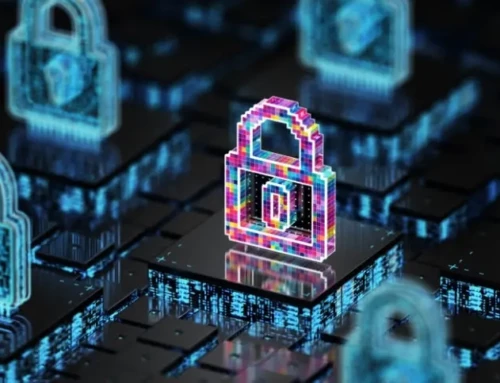Everyone knows how vital cybersecurity is for protecting personal information, finances, and sensitive company data. Cyberthreats such as hacking, malware, and social engineering are constantly evolving, making it essential for organizations to have a comprehensive cybersecurity strategy in place.
However, despite realizing this, many organizations don’t know the best way to approach cybersecurity. Some companies may only focus on protecting their network or implementing certain security tools, while others may overlook the importance of compliance and risk management. When it comes to cybersecurity, companies need some semblance of structure and guidance to ensure they are adequately protected. This is where the cybersecurity governance, risk, and compliance (GRC) framework comes into play.
What is cybersecurity GRC?
The cybersecurity GRC framework helps organizations manage and oversee their cybersecurity efforts effectively. It combines three essential elements to create a holistic approach to cybersecurity:
- Governance: Governance refers to the policies, procedures, and controls put in place to manage and oversee cybersecurity within an organization. This involves assigning responsibilities, setting objectives, and defining the overall strategy for cybersecurity.
- Risk management: The primary goal of enterprise risk management is to determine an organization’s cyber risk exposure and its potential impact. Identifying these cyber risks typically involve conducting a series of risk assessments, penetration tests, and vulnerability scans to identify any weaknesses in the system.
- Compliance: Compliance refers to the various regulations and standards that an organization must adhere to regarding cybersecurity. This could range from industry-specific regulations such as HIPAA for healthcare organizations and PCI DSS for companies that handle credit card information to more general standards such as ISO 27001. Compliance with these regulations not only helps organizations avoid legal repercussions but also ensures they are following best practices for cybersecurity.
Why is cybersecurity GRC important?
The GRC framework provides structure and guidance to organizations when it comes to cybersecurity. By focusing on governance, cyber risk management, and compliance, organizations can create a more robust cybersecurity strategy that can anticipate, withstand, and recover from cyberthreats more efficiently.
It also helps companies better allocate resources and prioritize cybersecurity efforts. For example, healthcare companies must focus on protecting patient data and addressing the most common threats in their sector (i.e., ransomware).
Additionally, compliance with legal and regulatory requirements not only helps organizations avoid potential financial penalties but also protects against reputational damage resulting from data breaches or cybersecurity incidents. In an era where data is a critical asset, maintaining its integrity, availability, and confidentiality through effective GRC practices is indispensable for sustained business success and growth.
Lastly, the ever-evolving nature of cyberthreats makes it necessary for organizations to adopt a proactive and holistic approach to cybersecurity. GRC provides this by continually assessing security risks, adapting to changes in the regulatory landscape, and ensuring that governance policies are up to date. This allows organizations to stay ahead of cybercriminals and keep their data safe.
Best practices for effective GRC in cybersecurity
To maximize the effectiveness of cybersecurity GRC, organizations should adopt the following best practices:
Monitor and assess cybersecurity regularly
Using security incident and event management tools is an effective way to continuously monitor networks, systems, and applications for potential cyberthreats. These tools provide real-time insights into network activity, user behavior, and security events, allowing businesses to identify and respond to threats promptly.
Regular assessments, including vulnerability scans, penetration testing, and security audits, also help identify weaknesses in the cybersecurity infrastructure and ensure that security controls are effective and up to date.
Adapt to changing regulations and threats
Regulatory compliance requirements are not static, and organizations must continuously adapt their cybersecurity practices to remain compliant. Companies should therefore regularly review regulations and standards relevant to their industries and update governance policies accordingly.
What’s more, cyberthreats are continually evolving, and organizations must be prepared to adjust their risk management and security measures as needed to stay ahead of these threats. To adapt to these changes, organizations must regularly review and update their cybersecurity policies, procedures, and training programs. They should also stay informed about threats and cybercriminal activity through industry reports and threat intelligence sources.
Implement multilayered cybersecurity measures and zero trust
Adopting a multilayered approach to cybersecurity involves implementing diverse security controls across networks, endpoints, applications, and data.
Ideally, these controls should work together to protect against different types of attacks and provide redundancy in case one layer is breached. Essential security measures include next-generation firewalls, endpoint protection, end-to-end encryption, identity and access management systems, and data backup solutions.
Related reading: How to improve your IT security
Another effective approach to cybersecurity is implementing a zero trust model, where every user and device attempting to access the organization’s network or data must be authenticated and authorized. This approach typically requires companies to define granular access privileges and enable multifactor authentication at key points within the network to prevent unauthorized access.
Collaborate across departments
Effective cybersecurity GRC requires collaboration and communication between IT, security, compliance, legal, finance, and other relevant departments within an organization. As such, companies should establish cross-functional teams to develop and implement policies, mitigate risks, and ensure compliance with regulations.
Only when all departments are working together can organizations effectively understand the risks facing their business and take appropriate measures to address them.
Engage with security experts
Leveraging the expertise of cybersecurity professionals is instrumental in designing, implementing, and maintaining effective GRC frameworks. Security experts bring specialized knowledge, skills, and experience in areas such as threat analysis, risk assessment, compliance management, and incident response.
Collaborating with external security consultants or leveraging in-house security teams can enhance the effectiveness of GRC initiatives, ensuring that cybersecurity strategies are tailored to the organization’s unique risk profile, industry requirements, and technological environment.
Comprehensive governance, risk management, and compliance practices in cybersecurity is an absolute necessity to protect your organization today.
Dynamic Solutions Group has a wealth of experience in assisting businesses with developing and implementing effective GRC frameworks that align with their unique needs. Contact us today to learn how we can keep your business secure and compliant.






